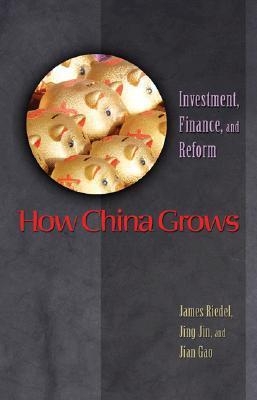
CHAPTER 1
Overview of Economic Reforms
and Outcomes
Since the policy reform process began in 1979, China’s
economy has undergone rapid growth and structural change.
If ever there was any doubt that “policy matters,” China’s experience
over the past 25 years should dispel it once and for
all. The reforms themselves did not, however, cause growth
and structural change, but rather created incentives and institutions,
absent in the socialist planned economy, that were a
necessary precondition for growth and structural change to
occur. It was up to those who participated in the economy—
individuals; state-owned, collectively owned, and privately
owned firms; as well as government workers and officials—to
respond to the newly created incentives and institutions to
bring about growth and structural change.
Because the record on growth and structural change in
China is remarkable, much effort has been given not only to
describing the reforms themselves but also to assessing China’s
overall approach to reform. No one can dispute that China has
been successful, but observers have debated whether an alternative
approach to economic reform in China would have
yielded even better outcomes than the one chosen. On one side
of this debate are those who argue that China’s “gradual” and
“experimental” approach to reform was appropriate, if not
optimal, given the political and socioeconomic conditions that
existed at the outset of the reform process (Naughton 1995;
Rawski 1994; Lau, Qian, and Roland 2000). On the other side
are those who argue that even better outcomes would have
obtained if China had avoided experimentalism and instead
had more vigorously embraced old-time religion, adopting as
quickly as possible the incentive systems and institutions of a
typical market economy (Sachs and Woo 2000).
At the heart of this debate is the question of whether China
succeeded because of, or in spite of, the gradual, experimental
approach it adopted. It has been argued that China’s superior
performance as compared to other transition economies
had far less to do with the gradual, experimental character of
the reforms than with the conditions that existed at the outset
of the reforms (Riedel 1993; Sachs and Woo 1994). In 1979,
after more than a decade of economic and political turmoil,
China’s economic resources were grossly underutilized and
misallocated, with 70 to 80 percent of the labor force in the
rural sector largely unemployed or underemployed. From such
a starting point, almost any improvement in material incentives
was bound to have a significant positive impact on growth and
structural change. Proponents of gradualism, however, argue
that a more rapid approach would have created many more
losers from the reform process who could have generated a
political backlash that might have derailed the process altogether.
The gradual, experimental approach, the key feature
of which was decentralization through a system of contracts
between higher and lower levels of government, created incentives
and rewards that, so it is argued, co-opted potential
adversaries of economic reform into accepting and participating in the process.
This debate is likely to continue for years to come, since it
can never be resolved conclusively. It cannot be resolved because
the proof on both sides is a counterfactual outcome
and as such requires a replay of history. As an ancient Greek
philosopher noted, “Even God cannot change the past.” For
this reason, we avoid weighing in on this debate and instead
simply review briefly (in the following sections of this chapter)
the basic facts about the reforms and their outcomes. As
this review indicates, both characterizations are valid—the
reform process was incremental and experimental, while the
How China Grows: Investment, Finance, and Reform by James Riedel, Jing Jin, an Jian Gao




